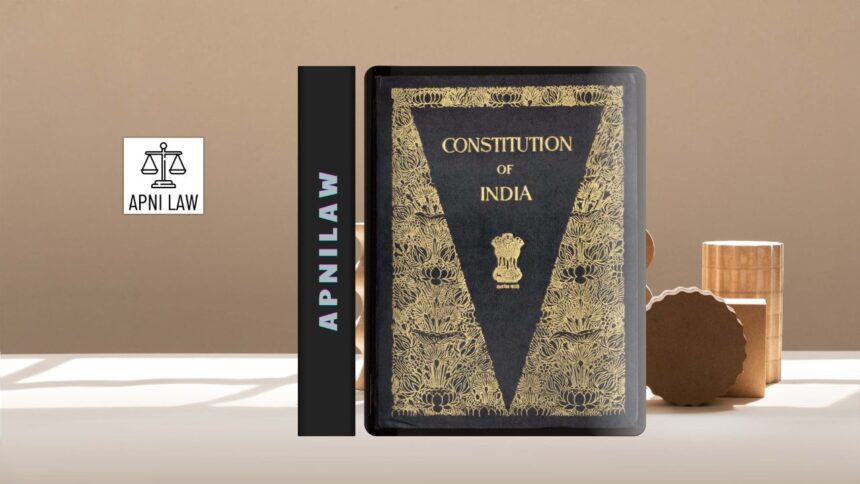The 44th Constitutional Amendment Act of 1978 became a turning point in India’s democratic history. It came after the excesses of the Emergency between 1975 and 1977, when civil liberties were suspended, political opponents were jailed, and freedom of the press was crushed. The amendment introduced multiple safeguards to ensure that such misuse of power would not happen again. By correcting the distortions made by the 42nd Amendment Act of 1976, it strengthened constitutional democracy and reinforced the rule of law.
The 44th Amendment did not just limit the scope of Emergency powers. It also created new checks within the executive, empowered Parliament, secured judicial review, and gave citizens permanent protection of their basic rights to life and liberty. To this day, it remains one of the strongest guarantees against authoritarianism in India.
Why Was the 44th Amendment Act Necessary?
The 1975 Emergency exposed the dangers of vague constitutional language and unchecked executive power. Under Article 352 of the Constitution, the government had declared a National Emergency on the ground of “internal disturbance.” This phrase had no clear definition and gave enormous discretion to the Prime Minister.
During the Emergency, political opponents were detained without trial under preventive detention laws. Fundamental Rights were suspended, including the right to life and liberty. Citizens could not approach courts for protection, as Article 359 barred judicial remedies. The press was censored, and dissent was silenced.
These events shook public confidence in democratic institutions. When the Emergency ended in 1977 and the Janata Party came to power, one of its first priorities was to amend the Constitution to prevent such misuse again. The 44th Amendment Act of 1978 became the response, and it remains a cornerstone of constitutional reform.
How Did the Amendment Narrow the Grounds for Emergency?
Before 1978, Article 352 allowed an Emergency to be proclaimed on grounds of “internal disturbance.” This phrase was vague enough to justify Emergency even in ordinary situations of political unrest. It was this ambiguity that allowed the government in 1975 to justify its actions.
The 44th Amendment Act replaced “internal disturbance” with the more specific term “armed rebellion.” This meant that Emergency could not be imposed for minor law and order problems or political protests. Only serious threats like war, external aggression, or armed rebellion would justify Emergency. This change reduced the scope for arbitrary interpretation and created a stricter threshold.
What Role Does Cabinet Advice Play in Proclaiming Emergency?
Earlier, the President could act on the advice of the Prime Minister alone. The Prime Minister did not even need to produce written advice from the Cabinet. This concentration of power in one office was dangerous.
The 44th Amendment required that the Council of Ministers must give written advice to the President before an Emergency could be proclaimed. This ensured collective responsibility. It also prevented unilateral decision-making by the Prime Minister. With this safeguard, the decision to impose Emergency became an institutional one, not a personal one.
How Did the Amendment Strengthen Parliamentary Control?
Under the old provisions, Parliament had two months to approve Emergency. The 44th Amendment reduced this to one month. This created faster scrutiny by the legislature.
In addition, the continuation of Emergency beyond six months required the approval of both Houses of Parliament by a special majority. This meant a majority of the total membership of the House and two-thirds of members present and voting. A simple majority was no longer sufficient. This requirement made it harder for a ruling party to extend Emergency indefinitely.
Can the Lok Sabha Revoke an Emergency?
Yes. The 44th Amendment empowered the Lok Sabha to revoke Emergency if it passed a resolution of disapproval. Once such a resolution passed, the President was bound to revoke the proclamation immediately.
The amendment also gave ten percent of Lok Sabha members the power to demand a special sitting to discuss Emergency. This provision gave the opposition a real opportunity to challenge Emergency even when the ruling party had a majority. It strengthened the principle of accountability.
How Did the Amendment Protect Fundamental Rights?
Perhaps the most important safeguard introduced by the 44th Amendment was the protection of Articles 20 and 21.
During the 1975 Emergency, citizens were denied even the right to life and liberty. Courts refused to intervene in illegal detentions, as seen in the infamous case of ADM Jabalpur v. Shivkant Shukla (1976), where the Supreme Court held that a person had no remedy if detained unlawfully during Emergency. This judgment is often remembered as one of the lowest points in Indian judicial history.
The 44th Amendment corrected this injustice. It explicitly declared that Articles 20 and 21 could never be suspended, even during Emergency. Article 20 protects citizens from retrospective criminal laws and double punishment. Article 21 guarantees the right to life and personal liberty. With this safeguard, citizens could always approach courts to challenge unlawful detention.
What Were the New Rules for Preventive Detention?
Preventive detention laws were heavily misused during the Emergency to silence political opponents. People were detained for months without trial, and there was no real judicial oversight.
The 44th Amendment limited this power. It stated that preventive detention could not extend beyond two months unless an Advisory Board approved it. The Board had to include sitting judges, and its members were appointed on the recommendation of the Chief Justice of India. This measure introduced judicial scrutiny into preventive detention and reduced arbitrary use of power.
How Did the Amendment Reform the Suspension of Rights Under Article 359?
Article 359 earlier allowed the government to suspend the right of citizens to move courts for the enforcement of Fundamental Rights. This suspension applied to all rights, leaving citizens defenseless.
The 44th Amendment restricted this suspension. It made clear that the right to life and liberty under Articles 20 and 21 could not be taken away. Citizens retained the right to approach courts for protection against illegal detention or violation of basic freedoms. This safeguard strengthened judicial review even in extraordinary times.
How Did the Amendment Restore Press Freedom?
One of the darkest features of the Emergency was the censorship of the press. Newspapers could not report freely, and coverage of parliamentary proceedings was restricted. This created a culture of fear and secrecy.
The 44th Amendment restored the freedom of the press to report parliamentary and legislative proceedings. It recognized that a free press is essential for democracy. This reform ensured that even during Emergency, citizens could receive information about the functioning of their representatives. Transparency became a constitutional guarantee.
How Did the 44th Amendment Reverse the 42nd Amendment?
The 42nd Amendment Act of 1976 had concentrated power in the executive. It allowed longer Emergency periods without strict review. It weakened judicial review, allowed suspension of almost all rights, and censored the press.
The 44th Amendment reversed these changes. It empowered Parliament, strengthened judicial oversight, and restored citizens’ rights. The amendment ensured that the executive could never again operate without constitutional limits. It marked a shift back toward democratic governance.
What Is the Long-Term Impact of the 44th Amendment?
The impact of the 44th Amendment has been profound. Since 1978, no government has been able to misuse Emergency powers in the same way as in 1975. The strict thresholds, collective decision-making, judicial oversight, and permanent protection of life and liberty created strong constitutional barriers.
The amendment also reinforced India’s identity as a democratic republic. It signaled that the Constitution values liberty and accountability more than convenience of governance. Even during crises, the state must respect fundamental freedoms.
For law students and civil service aspirants, the 44th Amendment is often described as the “safeguard amendment” because it rebalanced the Constitution in favor of rights and democracy.
For any specific query call at +91 – 8569843472
Conclusion
The 44th Amendment Act of 1978 was not just a legal reform but a political and moral response to authoritarian excess. It narrowed the grounds for Emergency, required Cabinet approval, empowered Parliament, and permanently protected the right to life and liberty. It restored freedom of the press and gave citizens judicial remedies even during crises.
The amendment sent a clear message that India’s democracy would never again surrender its spirit to authoritarian rule. It stands as a safeguard for the future, ensuring that the mistakes of the past remain lessons and not recurring events.








